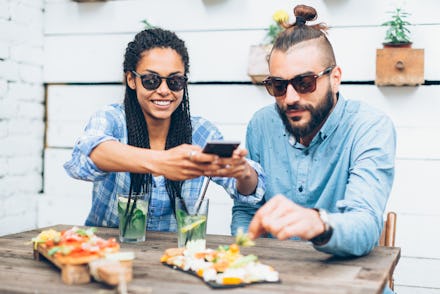5 apps for pro-style photo editing

We all know by now that, on the internet, few things are exactly as they seem. And that certainly applies to the pictures that populate your social media feeds. Even those labeled “#nofilter” have possibly been subjected to some level of non-filtered editing. Editing is a natural part of any photographer’s process — professional or otherwise — and these days, there’s a wealth of apps that make it easy to do so right from your phone and get quality results.
Adobe Lightroom
Lightroom is part of the Adobe Creative Cloud family of products — which includes professional-level programs like Photoshop, Illustrator and Dreamweaver — so you can rest assured there’s a certain level of quality there. You can subscribe to a paid plan that includes cloud storage, easy syncing between devices, and editing features like a healing brush; but the free version of the mobile app comes with plenty of solid features as well, like the popular presets. “Lightroom offers a great tool for creating consistency in tone and aesthetic, especially for an Instagram grid,” said Calli Cholodenko, founder and CEO of Something Social. “You can create your own preset that can then be applied to all images.” And if you don’t quite know where to start creating your own presets, she added, “many talented photographers and influencers now offer their own presets, which can be easily downloaded and applied to your images.”
Erick Prince, the travel journalist and photographer behind Minority Nomad, said he uses Lightroom and Photoshop together to get his final, striking results. “I’ve tried over a dozen photo editing apps at this point, and few even come close to being as good as my Lightroom/Photoshop combination,” he said. “My usual workflow starts with Lightroom for about 80 percent of my editing. Then Photoshop for the final minor adjustments.”
Snapseed
Ask almost anyone with a professional-looking Instagram feed for their favorite photo-editing apps, and Snapseed (which is available on iOS and Android), is likely to be among the recommendations. It’s “hands-down one of the best photo-editing apps with so many editing capabilities,” said photographer Kenny Kim. “It’s great for all genres of photography.”
The free app includes a huge list of editing tools (like the usual brightness, highlights and saturation-type changes), but one of its marquee features is the ability to adjust only one portion of a photo at a time. “My brand is all about fashion, so when I want to highlight a particular garment or accessory, it’s easy to do that by upping the contrast or highlights, and the same goes for my overall aesthetic,” said Patrice J. Williams, an affordable style expert and author of Looking Fly on a Dime. “I love vibrant colors and dressing like a bag of Skittles. Snapseed’s ‘Selective’ feature lets me home in on a particular garment and play with the color a bit without impacting the rest of the photo, especially my face. Also, since I shoot most of my pics in NYC, it’s near impossible to have a street without a bit of trash or strangers walking by. The ‘Healing’ tool can make most of those things disappear with a few strokes.”
VSCO
VSCO is another oft-recommended app among photo-savvy Instagrammers. As Marissa Stahl, COO of Something Social pointed out, the app started as a social media platform where content creators and photographers could share their edited images with each other — but you don’t have to use it in that way. “While the collaborative community aspect still exists, the app is also one of the most useful tools for creating a consistency in the overall look, tone and feel of your images,” Stahl said. “A few different filters come standard with the app but we recommend buying the additional presets that are available. To use this app to create a consistency in the images you post on social media, stick to one or two different filters, adjusting each for the specific photo you are editing.” If you become a VSCO member, you’ll get the app’s full suite of preset filters, as well as additional editing features like the ability to add borders and adjust hue, saturation and lightness.
TouchRetouch
Unless you’re a professional photographer with a hefty amount of money and resources, chances are you can’t set the scene for your photos exactly as you want. (To be honest, even if you are the aforementioned professional, it can be tough to do so out in the real world.) Instead of trying for way too long to frame your photo so that the garbage can in the background is out of sight but the pretty flower next to it makes it in, you can deal with it after the fact with TouchRetouch, which Stahl said is one of the most useful photo editing apps to have on hand.” She added, “You can easily remove unwanted objects like power lines or traffic signs, blemishes on skin or unwanted people in the background of your photos with a few easy swipes. By removing these distracting elements from your image, it draws the viewer’s attention more closely to the intentional subject.”
PicTapGo
Sometimes, one filter just doesn’t quite do it; and if you want to mix-and-match — do a little a la carte filtering — PicTapGo is an easy option. “I love the ability to add multiple layers of filters through this app,” Kim said. “Each layer’s opacity can be adjusted so that combination of filters are endless. [It’s] great for travel photos.” This app isn’t free, but $3 for 70-plus filters (plus a handful of other editing tools) isn’t too shabby.